At once futuristic and timeless, a perfectly round building is a feat of engineering that instantly becomes an icon by virtue of its sublime geometry. Architects have created variations of spherical structures around the world. Museum, venue, office, garden – there is hardly an application a spherical building can’t accommodate.


Digital planetarium theatre in Sao Paulo by Kruchin Arquitetura
When asked to design a digital planetarium theatre as part of a mixed-use complex in Sao Paulo that includes a commercial building, a research center and a restored mansion, Brazilian firm Kruchin Arquitetura performed a thorough research regarding how to symbolically translate the experience of observing the universe. The solution was found when Samuel Kruchin, founder of the firm, picked up a shell on an unpretentious stroll along the beach. According to him, the birth of pearls and the nursery of stars were from the same source, from the same origin: the shell, the casing that will tell the creation of the world.

Digital planetarium theatre in Sao Paulo by Kruchin Arquitetura
The new theater is intended for scientific and educational lectures, and immerses viewers in a 360 degrees projection of the spatial images inside its dome. Inspired by the image of the pearl, of the “transformation of the grain into geometry”, the building is defined by three layers of overlapping roofs, all enclosing a spherical volume. The teal sphere creates a sense of allure because of its resemblance to the shape of a planet.


Digital planetarium theatre in Sao Paulo by Kruchin Arquitetura
The outer membrane of corrugated concrete covers the sphere only partially, resting on the square’s structure. Its surface features a protective layer for waterproofing without affecting the design of its texture. Naturally painted translucent elements inserted between the layers add a visual filter to the interiors that resembles outer space. The panels are intended to keep the building enclosed and control its thermal environment, protecting the extremely sensitive equipment inside.

Digital planetarium theatre in Sao Paulo by Kruchin Arquitetura
The access inside is through the walkway that connects all the buildings of the complex as well as the low square that connects the theater with the institute of theoretical physics.
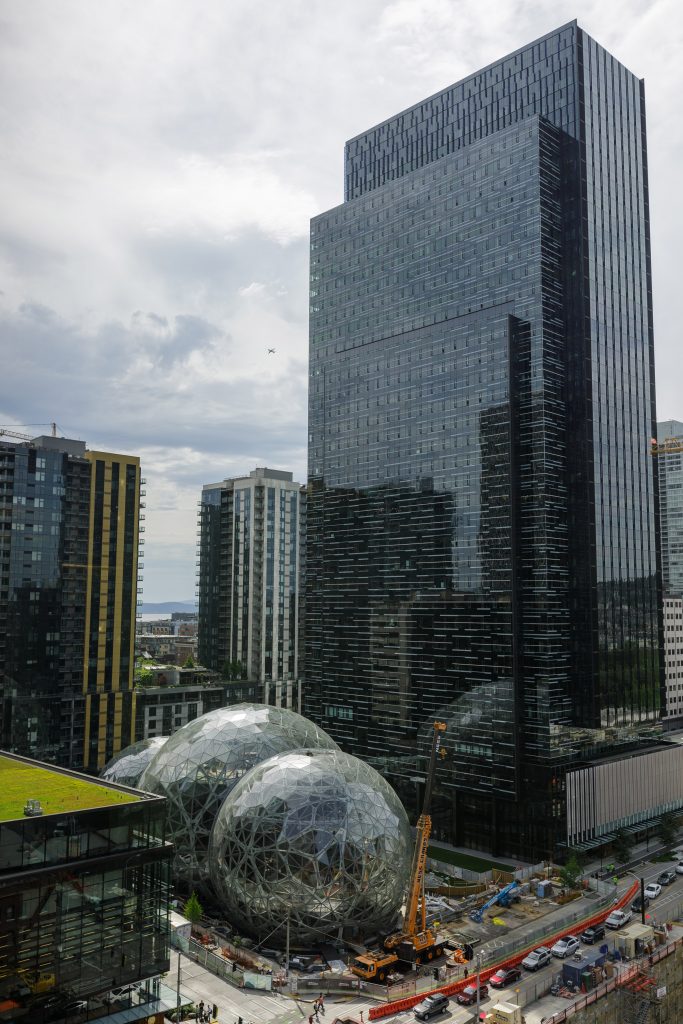
The Spheres at Amazon’s HQ by NBBJ
Intended as mostly private workspaces and meeting areas for employees, the Spheres at Amazon’s Seattle headquarters by American practice NBBJ feature a garden-like interior filled with lush greenery. The glass domes are accessible to the public through an exhibit space at the ground floor, retail spaces, or on the company’s guided office tours.
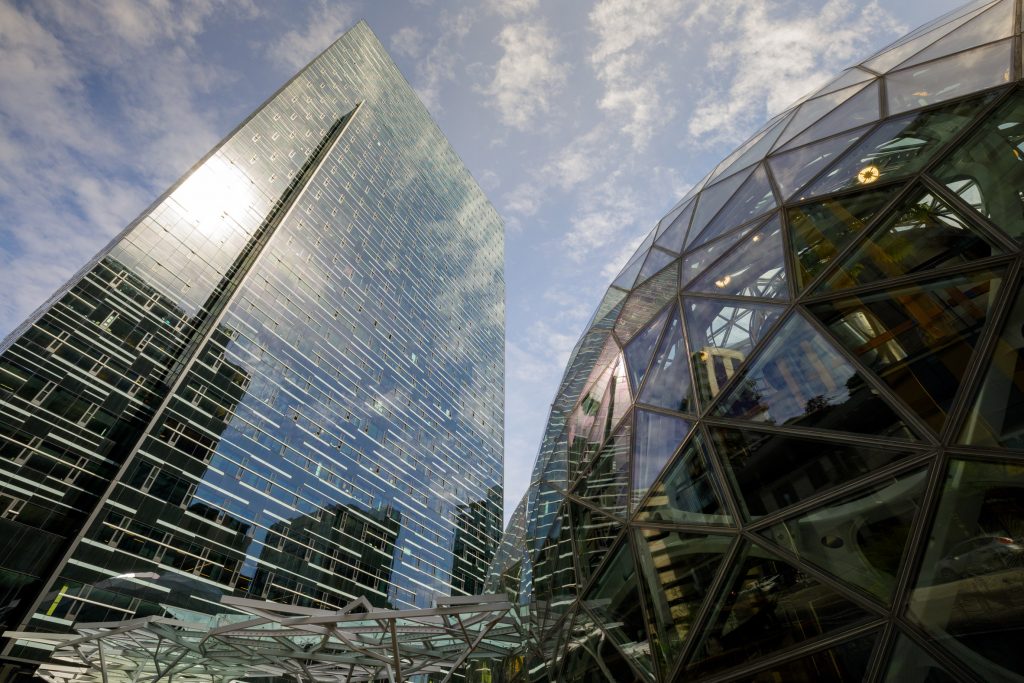
The Spheres at Amazon’s HQ by NBBJ
The Spheres comprises a trio of connected glazed orbs constructed from 620 tons of steel and supported on a thick concrete base. All three units share an open-plan indoor area that is filled with thousands of plants, which can be viewed from multiple vantage points.
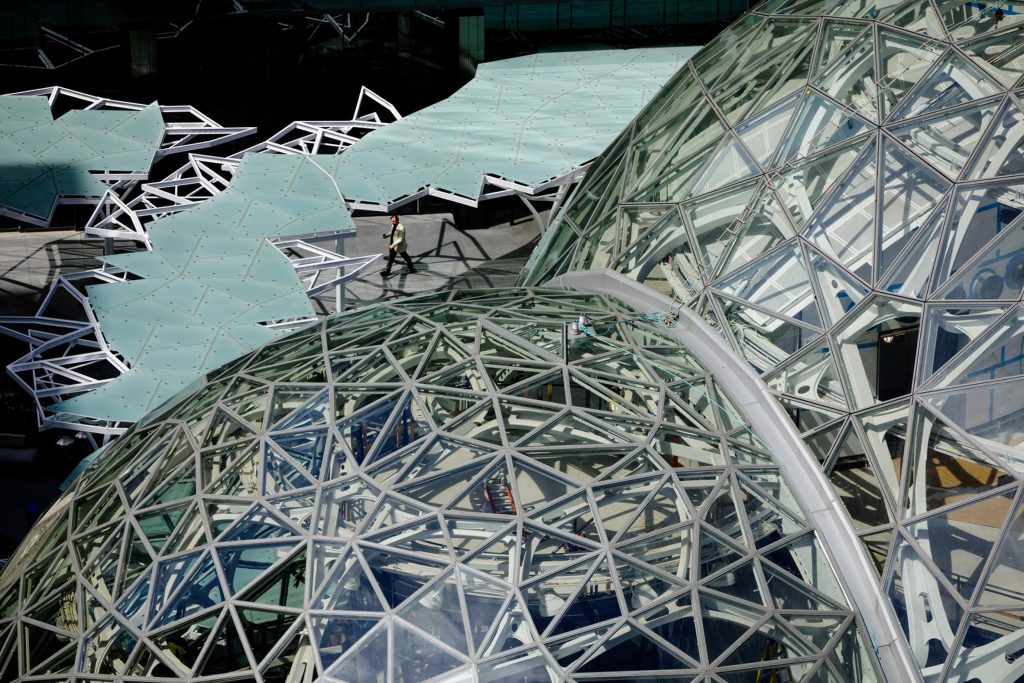
The Spheres at Amazon’s HQ by NBBJ
2,643 panes of clear glass, tessellated to form a seemingly curved surface cover the structure. Its geometric pattern is derived from a shape found in nature, known as a Catalan solid. The level of infrared radiation of the sunlight that enters the spheres is limited by a layer of film underneath the glass, which allows to keep the interior cool. The interior features timber decking, floating staircases, terraces and water features, and includes a four-storey wall covered in living organisms.
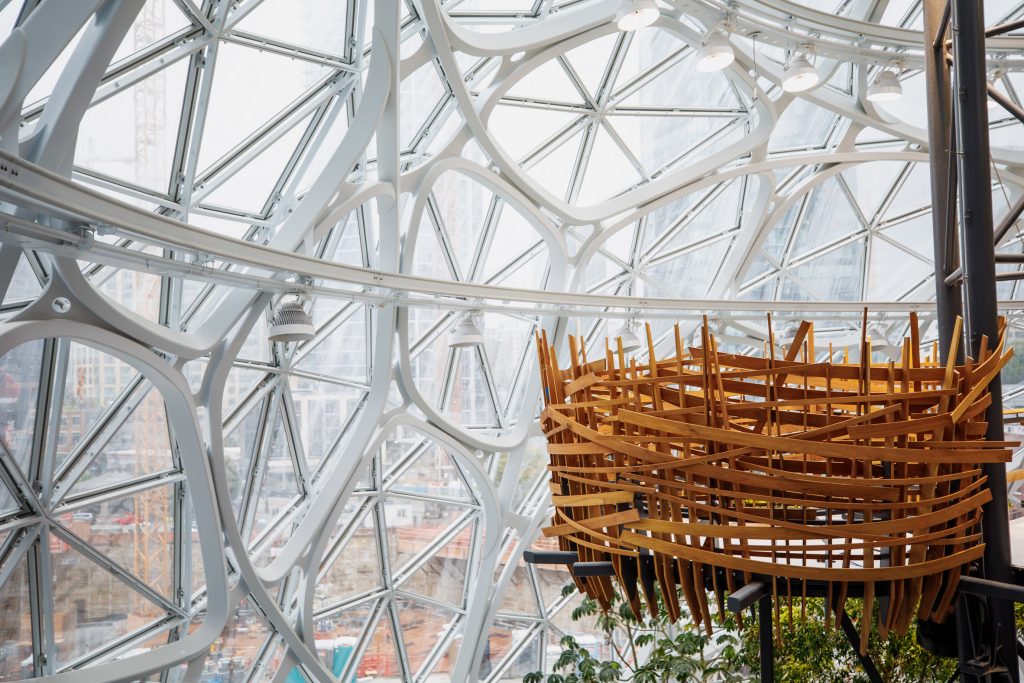
The Spheres at Amazon’s HQ by NBBJ
“Studies suggest that spaces that embrace biophilic design can inspire creativity and even improve brain function,” said Amazon’s blogpost.
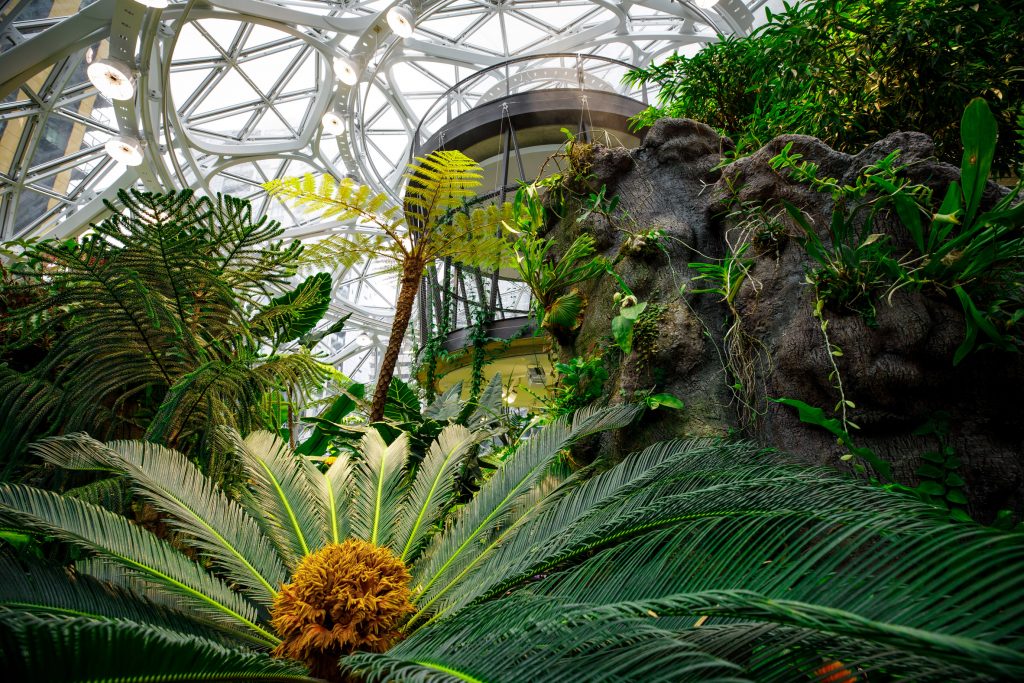
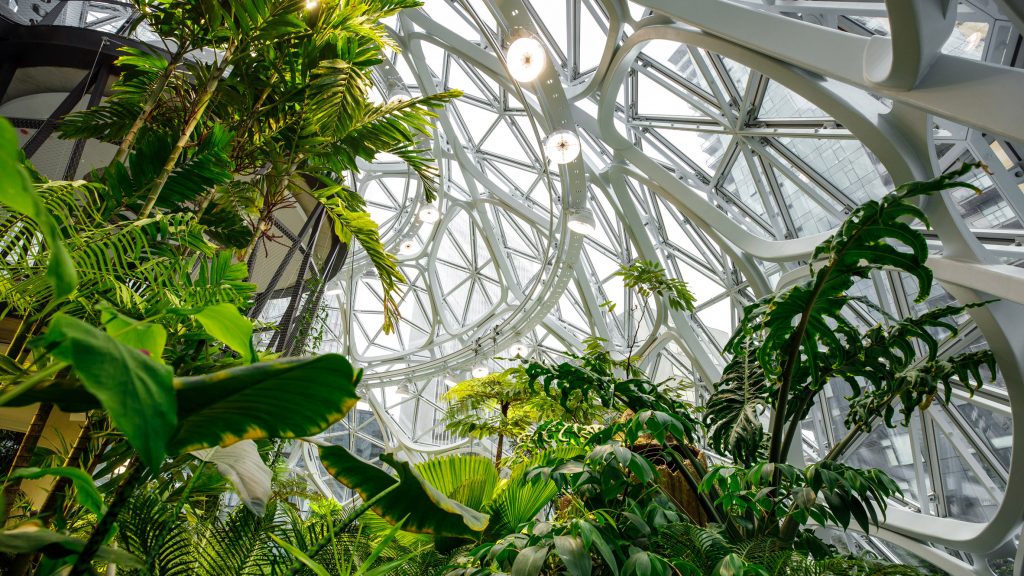
The Spheres at Amazon’s HQ by NBBJ
For the Seattle community could gather to experience biodiversity in the centre of the city, over 40,000 individual plants from all over the world fill The Spheres, many of them being from cloud-forest ecosystems, which are typified by cool, humid conditions. Though the structure is conceived as “a direct link to nature” for Amazon’s employees, the public can access an areas at the base of the garden called Understory, which acts as a visitor centre.
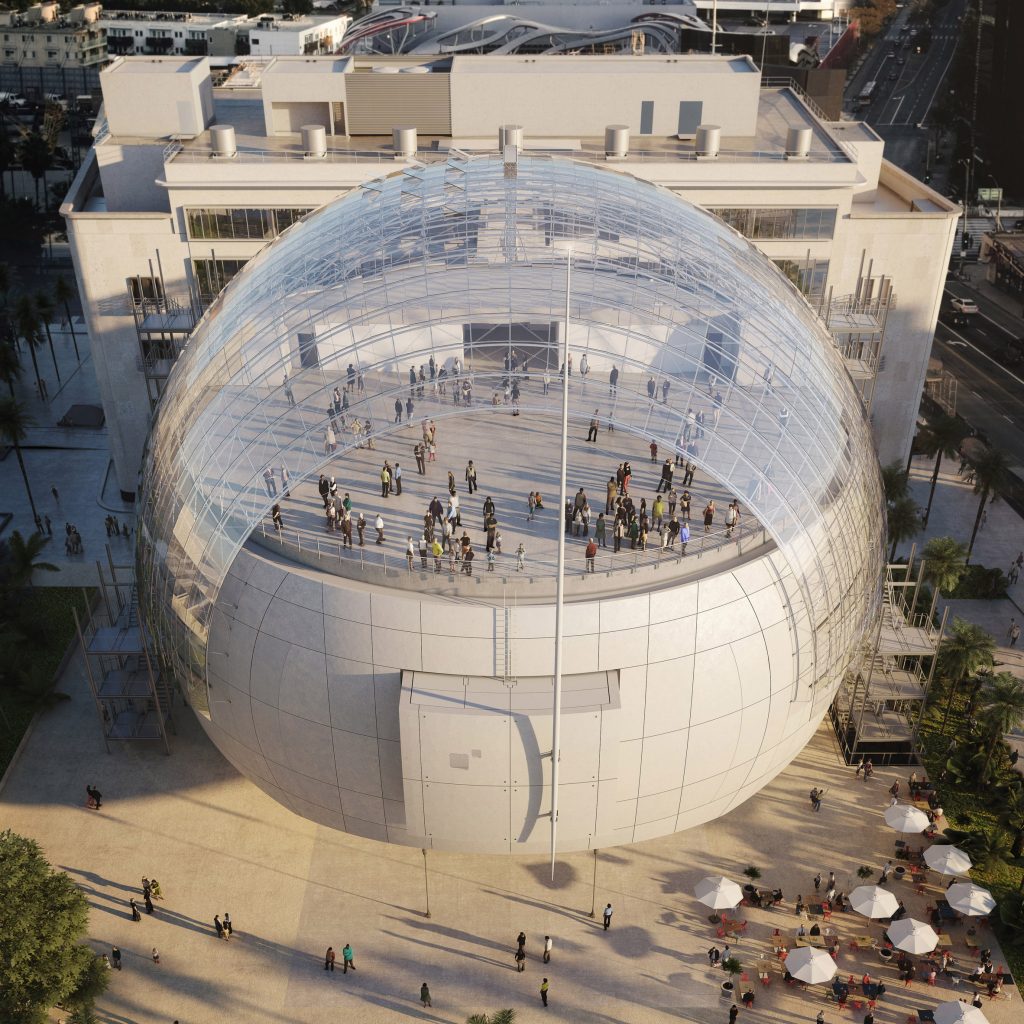
Academy Museum of Motion Pictures by Renzo Piano (via; also header image)
Pritzker Prize laureate Renzo Piano, founder of the Renzo Piano Building Workshop (RPBW) with offices in Genoa, Paris and New York, has developed a design for the Academy Museum of Motion Pictures in Los Angeles that is home to Hollywood’s movie studios.
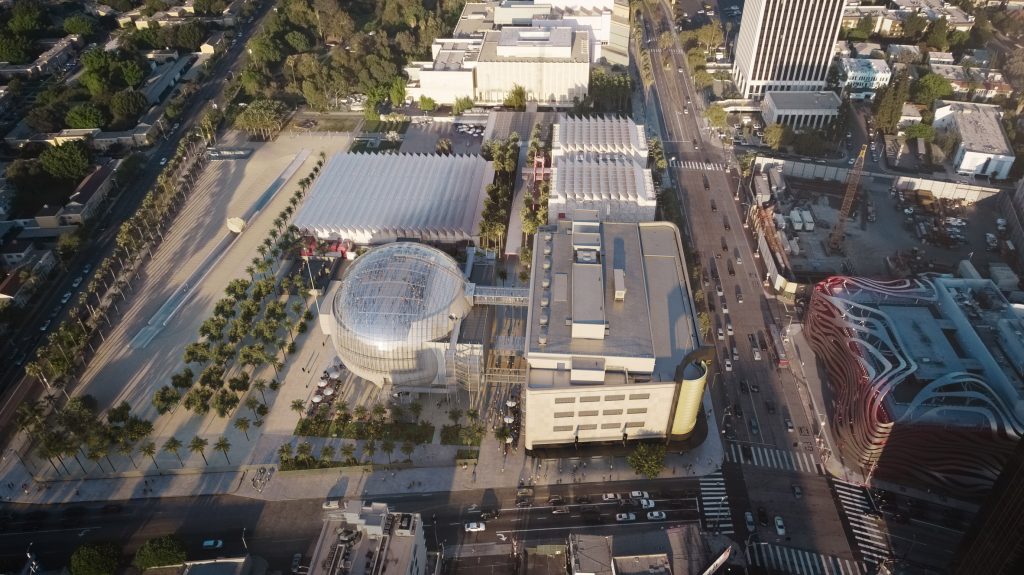
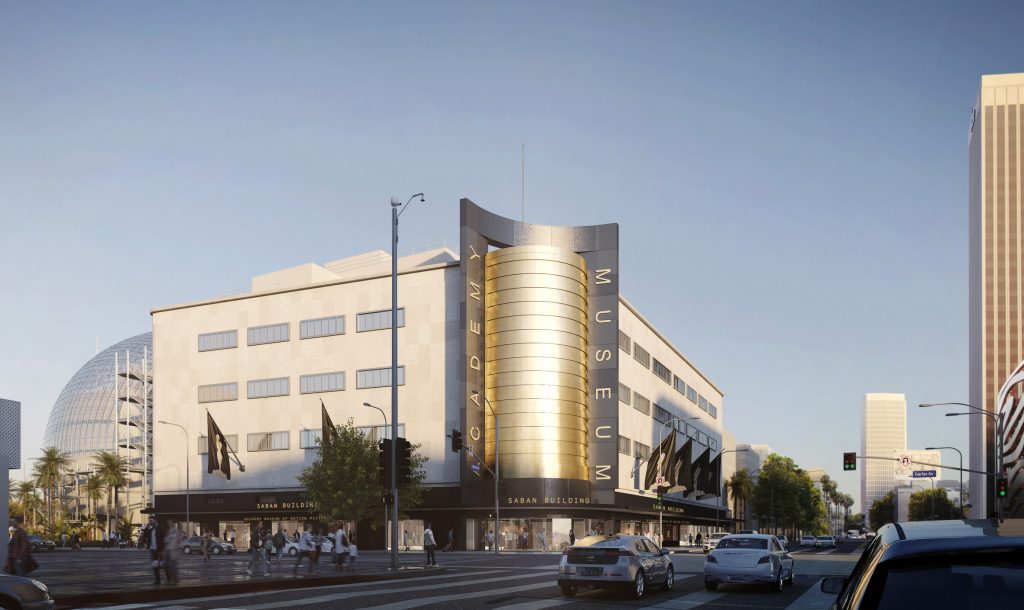
Academy Museum of Motion Pictures by Renzo Piano (via dezeen)
Currently under construction, the museum will host a collection of film memorabilia including set designs, costumes, props and interactive installations from the Academy of Motion Picture Arts and Sciences, which organises the coveted annual Oscars awards. This is going to be the world’s premier institution dedicated to the art and science of movies and moviemaking giving the visitors a look behind the scenes into how movies are made and to exploring movies’ impact on culture and our lives.

Academy Museum of Motion Pictures by Renzo Piano (via dezeen)
A new spherical addition will accommodate a 1,000-seat theatre and a dome-covered terrace with views of the Hollywood Hills. The large theatre in the sphere is designed for events, premiers and presentations.

Academy Museum of Motion Pictures by Renzo Piano (via dezeen)
Across the campus, long-term exhibitions presenting the history of movie-making will be accompanied by a programme of temporary installations dedicated to specific movies, genres or directors. Restaurants, shops and education spaces will also feature.